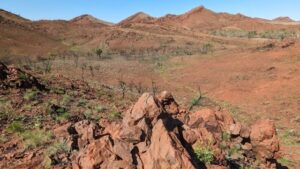The oldest known meteorite impact crater on Earth, dating back 3.5 billion years, has been identified by researchers at Curtin University in Australia. The findings are presented in a paper published in the journal Nature Communications.”
The research team explored rock layers at the North Pole Dome site, an area of great geological interest in Western Australia. It found evidence of a major meteorite impact 3.5 billion years ago.
Before this discovery, the oldest impact crater identified was 2.2 billion years old. Co-leader of the study, Professor Tim Johnson from Curtin University, notes that the discovery significantly challenges previous assumptions about the ancient history of our planet.
Researchers discovered the crater thanks to the distinctive rock formations that only form under the intense pressure of a meteorite impact. In this particular case, it is estimated that the meteorite hit the area at a speed of more than 36,000 kilometers per hour. The resulting crater was more than 100 km wide.
The professor at the same university, Chris Kirkland, one of the study’s authors, says the discovery sheds new light on how meteorites shaped the early Earth’s environment. “The discovery of this impact and the finding of more from the same period could explain a lot about how life may have started, as impact craters created environments friendly to microbial life, such as hot springs,” he explains. It also, he continues, “radically revises our understanding of crust formation: the huge amount of energy from this impact could have played a role in forming Earth’s early crust, pushing one part of the Earth’s crust under another or causing magma to rise from the depths of the Earth’s mantle to the surface.”
Ask me anything
Explore related questions





